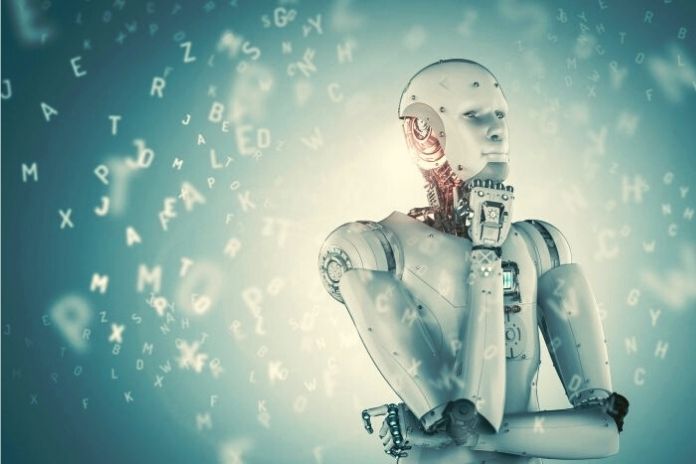Artificial intelligence (AI) simplifies search for talents on Internet today & supports competence management with assessment & development. This article focuses on AI in personnel selection and the assessment of talents and employees – especially the AI-based evaluation of video interviews for the analysis of personality traits. This represents an “added value” to the standardized video interview that Viasto established a few years ago.
Suppose an AI engine automatically provides the talents and employees with a personality profile. In that case, when checking the results, the focus must be on the quality criteria of the procedure: objectivity, validity, and reliability.
The results from the AI analysis depend on the quality of the input data: Emotional introduction of the talents or employees to the video interview, the possibility of repetition; Other topics such as the length of the questions or the answers, light and sound conditions influence the quality and informative value of the results.
AI In Personnel Selection – Opportunities Of AI-Based Video Analysis
AI-based video analysis has a clear advantage over the usual questionnaires: It is an objective and stable external assessment. Objectively because a colleague or acquaintance does not carry it out, and stable, because the evaluation criteria remain constant during repetitions. Both aspects are very relevant for recruiting and personnel development.
AI-based video analysis is an interesting addition to the usual face-to-face interviews in the recruiting process. On the one hand, the recruiters see the talents in the video and can gain an impression in advance. This impression is then supplemented, refined, corrected, or confirmed with the results from the AI engine.
AI In Personnel Selection: Up To 70% Time Savings Through The use of video analyzes
Companies that use this process cite a time saving of up to 70 percent—this high time-saving results from the elimination of the telephone interview, the better accuracy of the results, and the focus in the face-to-face interview. In addition, there is a reduction in fluctuation and a better fit.
The results of traits, emotions, and languages require a recording time of 3 to 5 minutes. The questions asked by HR are part of the recruiting process and must be in line with the position. You should stimulate and bring out the attributes to be determined to be captured by the AI engine.
With AI-based video analysis, a qualitative and a quantitative assessment can be carried out. This can be matched with the job profile. As we will see in the next chapter, what sounds so easy here is subject to clearer boundaries.
Ultimately, the combination of AI and big data is interesting. A database with benchmark data can be created by capturing many profile results with the AI engine. On this basis, the HR department receives “real” job profiles. In addition, these job profiles can be linked to performance data such as the “ease index.” The company thus has relevant knowledge for the organization: What does the profile of high-performing employees look like? This is an important finding: a) for the development process of employees and b) for recruiting.
Limits Of AI-Based Video Analysis
In a small study (N = 61), the first insights were gained: Under which conditions are the determining results meaningful and under which not?
AI In Personnel Selection – Practical Examples
To clarify the benefits of an AI engine, we analyzed executive board members, founders, politicians, actors, satirists IN the USA in a small study. We analyzed each other concerning characteristics such as openness, fearfulness, extraversion, and tolerance compared. Plus, emotions and language. The input data Cloud comes from public YouTube videos where the people in question gave talks or interviews.
There are understandable differences in engaging language. The language of the board members is more captivating than that of the Unicorn founders. One reason for this is that board members are mostly older, have a stronger representative function than founders, and have a higher level of rhetoric skills. This thesis is to be confirmed or rejected in a larger study.
Clear differences in engaging language can also be seen in professions such as politicians, actors, and entrepreneurs. Politicians and actors need even more engaging language for their job than entrepreneurs. Board members and founders tend to focus more on numbers and products when it comes to communication.
However, a person’s successful life cannot always be deduced from a personality profile alone, as a comparison from practice shows. This must take into account the evaluation of talents in the recruiting process. Therefore, an automated selection by the AI engine alone is not recommended. It also needs the people behind it.
Recommendations In The Handling Of An AI Engine For Personnel Work
- No automated personnel selection based on profile results
- Comparison of the actual profiles only with target profiles (benchmark) from the same AI engine
- Use Personality Fit only as a general reference and not as a prioritization criterion.
- Prioritization based on position-relevant attributes
- Creation of target profiles in your own company with the help of the AI engine
- Employee profiles should automatically and continuously flow into the database of target profiles in an aggregated and anonymized manner based on their position and role.
- Valid target profiles need at least N = 10
- A person’s professional success cannot be read from a profile of characteristics.
- Only rough indications for choosing a career can be drawn based on AI results alone.
- With the help of AI results, personnel consultants can make a well-founded and well-founded candidate selection.
The AI engine can help personnel work if the limits of the method are observed.
ALSO READ: Social Media In The Workplace: These Are The Opportunities And Risks

